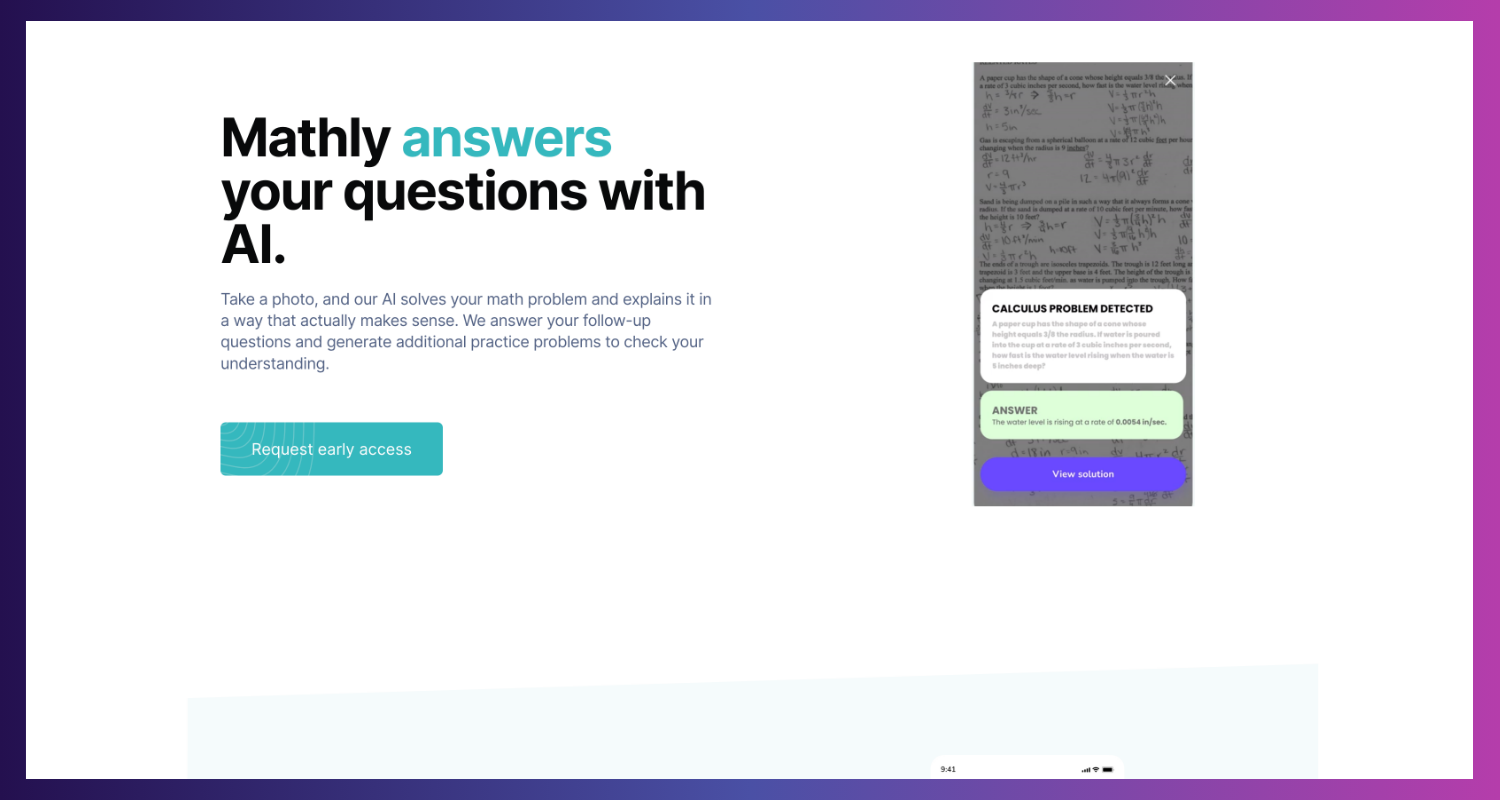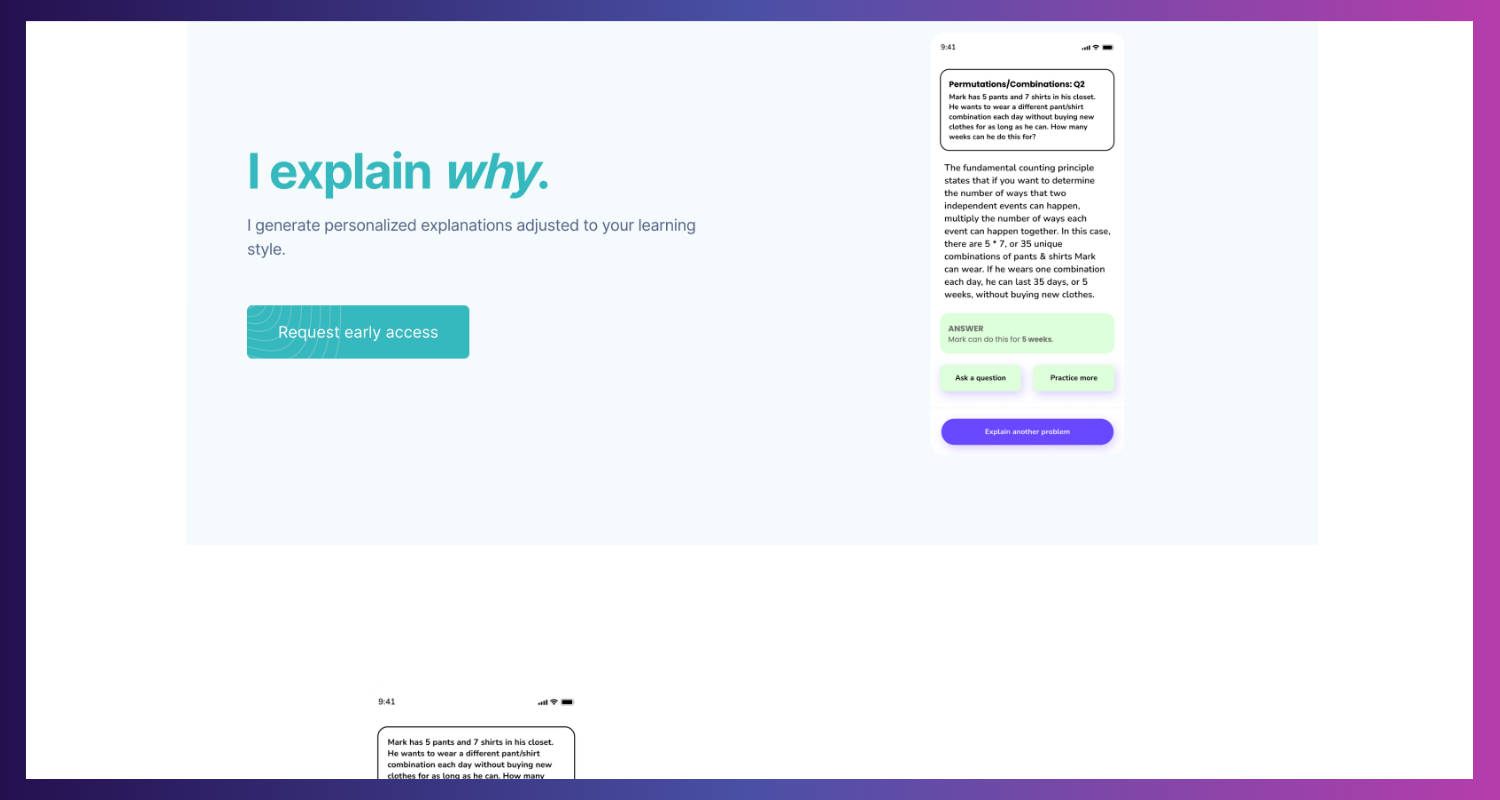Mathly


Introduction
AI is changing the way students learn, and math is no exception. One tool that has been making waves is Mathly — an AI-powered math assistant that promises to solve problems instantly, explain them step by step, and even generate practice questions.
But how good is it really? To find out, we analyzed the top reviews and mentions of Mathly across blogs, tool directories, and user platforms. This post gives you a balanced, EEAT-standard review so you can decide if Mathly is worth your time.
What is Mathly?
Mathly is designed to act like a personal math tutor in your pocket. Its key features include:
- 📸 Photo input: Snap a picture of a math problem and get an instant solution.
- 🧾 Step-by-step explanations: Not just the final answer, but the reasoning behind it.
- 💬 Follow-up Q&A: Ask extra questions if you don’t understand a step.
- 🏋️ Practice generator: Creates similar problems for you to try on your own.
On paper, Mathly offers more than traditional solver apps like Photomath — it focuses on learning, not just giving answers.
Where We Found Reviews
Since Mathly is relatively new, detailed independent reviews are still limited. We pulled insights from:
- Educational Tools Blog – long-form feature breakdown
- Product Hunt – user testimonials
- Softonic – app directory listing
- DeepGram – AI tools showcase
- AITopTools – AI tool directory with traffic data
- Capterra – software marketplace profile
- Medium – founder’s perspective on design
What Reviewers Say About Mathly
1. Educational Tools Blog
- Highlights Mathly’s personalized explanations and practice generation.
- Compares it with alternatives like Rocket Math and Math Solver App.
- Balanced but lacks evidence from rigorous testing.
2. Product Hunt
- One user called it “the BEST Math AI I’ve ever used”.
- Praises speed and accuracy (“solves every problem in seconds”).
- Feedback is glowing, but anecdotal and limited.
3. Softonic & DeepGram
- Summarize Mathly’s main features.
- Tone is promotional, with little critique.
4. AITopTools & Capterra
- Provide metrics (traffic, global rank).
- Admit there are few or zero verified user reviews so far.
- Useful for adoption insights, but not for performance testing.
5. Medium (Founder’s Post)
- Reveals the design philosophy: Mathly should “teach like a local, not a robot.”
- Strong on vision and intent, but naturally biased toward positives.
Strengths Highlighted Across Reviews
✔ Easy to use: Snap a photo, get answers.
✔ Step-by-step learning: Goes beyond just the final result.
✔ Interactive: Follow-up questions help deepen understanding.
✔ Personalization: Adjusts explanations based on learning style.
Weaknesses & Gaps
❌ Few independent reviews – most coverage is promotional.
❌ Advanced math not validated – no proof it handles higher-level math consistently.
❌ Pricing unclear – little info about free vs. paid tiers.
❌ Over-hype risk – user testimonials suggest perfection, but there’s no real testing data.
EEAT Assessment
- Experience: Limited; most reviewers did not rigorously test edge-case math.
- Expertise: Founder insights show strong vision, but third-party educational expertise is missing.
- Authority: Directories like Capterra add legitimacy, but lack depth.
- Trust: Transparency varies — some blogs disclose comparisons, but many posts read like marketing.
Should You Use Mathly?
Good for:
- Middle to high school students needing step-by-step guidance.
- Quick problem checks and generating practice problems.
- Learners who benefit from interactive Q&A rather than static answers.
Use with caution if:
- You need advanced math (calculus, proofs, Olympiad-level).
- You expect 100% accuracy — always cross-check results.
- You prefer well-established apps with years of user data.
Final Verdict
Mathly is a promising AI math tutor with big potential. Its strengths — personalization, instant solutions, and interactive learning — make it stand out in the crowded math app space.
However, because independent reviews are scarce, it’s best to treat Mathly as a helpful supplement, not a guaranteed replacement for teachers or textbooks. Try it, test it on your own math problems, and see if its explanations truly improve your understanding.

GALLERY
Featured image represents the contents





